Effective Family Philanthropy: The Roundhouse Foundation
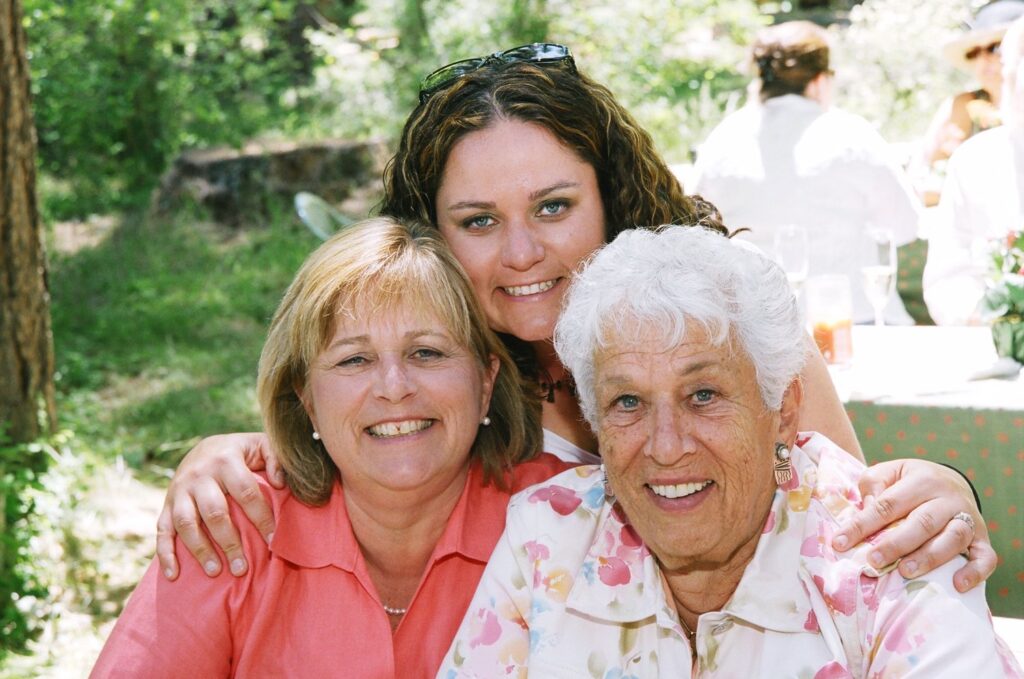
From left to right: Kathy Deggendorfer, Erin Borla, Gert Boyle
How the Family Behind a Sportswear Behemoth Is Expanding Its Philanthropy for Rural Communities
In 1937, Paul Lamfrom fled Nazi Germany and later founded Columbia Hat Company, a modest hat manufacturer in Portland, Oregon. When Paul passed away, the company’s reins were handed over to his son-in-law, Neal Boyle, who’d been working for him. After Neal died suddenly in 1970, his wife, Gertrude “Gert” Boyle, who was 46 at the time and a stay-at-home mother, took over. Though pressured to sell, Gert brought a new vision to the company, branching out into providing sportswear for everyone and not just athletes.
Today, Columbia Sportswear is synonymous with the great outdoors and the behemoth company is worth upwards of $5.5 billion. Current Columbia Sportswear CEO Tim Boyle, Gert’s son, is worth $2.5 billion.
Gert continued to loom large over her company and community through the years. She starred in humorous advertisements where she was known as “Ma Boyle” and “One Tough Mother,” and in her 80s, she even survived an attempted kidnapping.
“You don’t mess with little old ladies,” Gert told The Oregonian. In 2019, Gert passed away at 95.
Part of her legacy includes a long track record of family philanthropy. There are several philanthropic vehicles associated with this wealthy Oregon family, including the Tim and Mary Boyle Charitable Trust. The couple have been major donors to Tim’s alma mater, the University of Oregon.
Then there’s Roundhouse Foundation, launched in 2002 by Gert Boyle and her daughter, Kathy Deggendorfer. In 2014, Kathy’s husband Frank and daughter Erin Borla also became involved with Roundhouse. Grantmaking initially focused narrowly on supporting projects in the arts, but in the past few years, the foundation has expanded from its original focus, becoming interested in more broadly engaging in creative problem-solving throughout Oregon’s rural communities and tribal nations.
Notably, when Gert passed away three years ago, Roundhouse received a huge influx of funds, leading to what Kathy calls “an explosion of growth.”
I recently connected with Kathy and Erin from their hometown of Sisters, Oregon — population approximately 2,600. In our conversation, I found out more about the early days at the foundation and how Gert envisioned the family’s philanthropy, how grantmaking has grown to tackle creative placemaking in underfunded rural communities, and now, on the heels of a huge bequest, where the family plans on taking their philanthropy next.
Ma Boyle and the next generations
“Mom [Gert] always said it was better to give with a warm hand than a cold one. She was a very generous person. She disliked having anything named after her,” Kathy began. “In one case, when it came to naming a building after her, she said, if you have to do it, name a parking lot after me.”
Part of the reason the family settled on the name “Roundhouse Foundation” is that, in their small community, they didn’t want their name plastered everywhere.
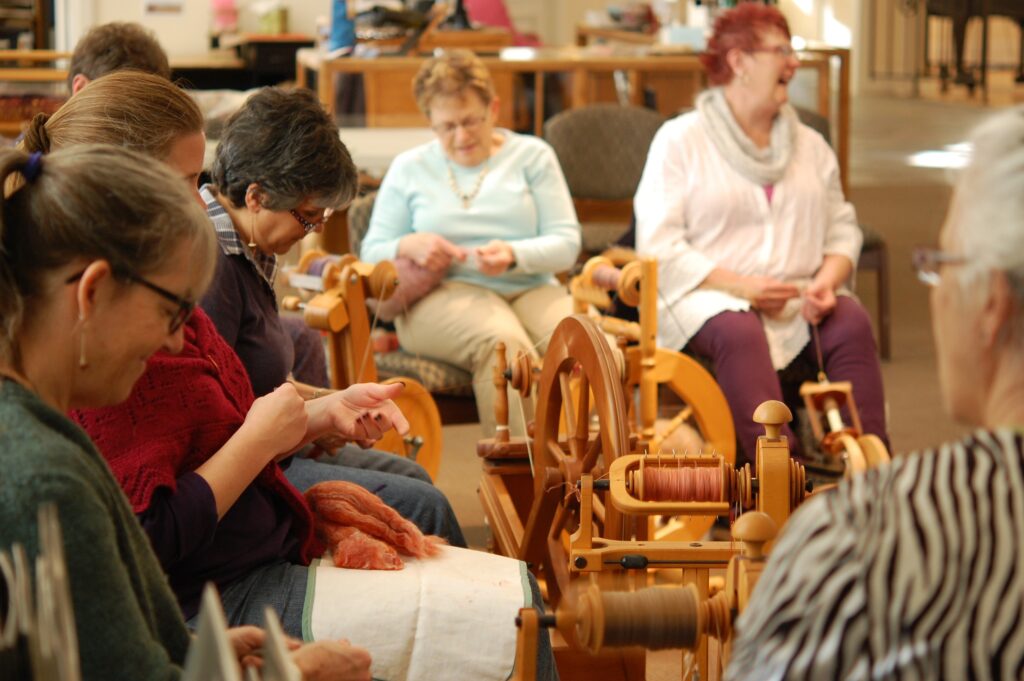
Roundhouse Foundation grantee partner, Pendleton Center for the Arts
Kathy describes her mother Gert as having been very much engaged in the arts, holding an art degree from University of Arizona. Gert’s father was a colonel in World War I and her mother was a nurse and on the Russian front. Both believed in being champions of their community, a spirit that was passed on to Gert and then to successive generations.
“If you want to live in a really great place, it’s up to you to create that. So we follow through with that great philosophy,” Kathy says.
In the early 2000s, Kathy and Gert were trying to figure out ways to support their local rural economy and the arts in Oregon. At the same time, Kathy also received a portion of her inheritance. Rather than just intermittently supporting causes, she thought this would be a good time to start formalizing giving through a foundation.
Out of this, the Roundhouse Foundation was born. With a modest corpus, Kathy says she was distributing about $12,000 in grants annually and working from her home office bedroom. Each year, the foundation grew bit by bit.
Her daughter Erin Borla, Roundhouse Foundation’s executive director, was engaged in the local Sisters community long before she formally joined the foundation. After graduating from Oregon State University and George Washington University, she came home to work at Sisters Folk Festival and the Sisters Area Chamber of Commerce. Then, in 2014, she joined Roundhouse Foundation’s board of trustees.
“I came back from school and knew I wanted to live in this rural space and work in economic development and creative space,” Erin tells me. A self-described “super nerd,” Erin advocated for public school libraries and for using them as mental health spaces for students.
An influx of cash for a revamped foundation
Just a few years ago, Roundhouse Foundation was giving away six figures annually and held around $22.5 million in assets (fiscal year 2018). Two years later, the foundation held nearly $142 million in assets and gave away more than $1 million. And in 2021, the foundation granted around $11 million.
This huge growth in the foundation’s asset base and annual grantmaking comes from a bequest after Gert Boyle’s passing in 2019. Part of Gert’s estate plan was to split funds between two family foundations, Kathy’s and her sister Sally’s.
The revamped Roundhouse Foundation now lists a total of 17 staff and trustees. A buttercup chicken and a barn cat round out the team.
Roundhouse focuses its work on four areas that it believes are fundamental to thriving rural communities — arts and culture, environmental stewardship, social services, and education. Grant partners include Pendleton Center for the Arts, Central Oregon Community College, High Desert Food & Farm Alliance, and Family Access Network.
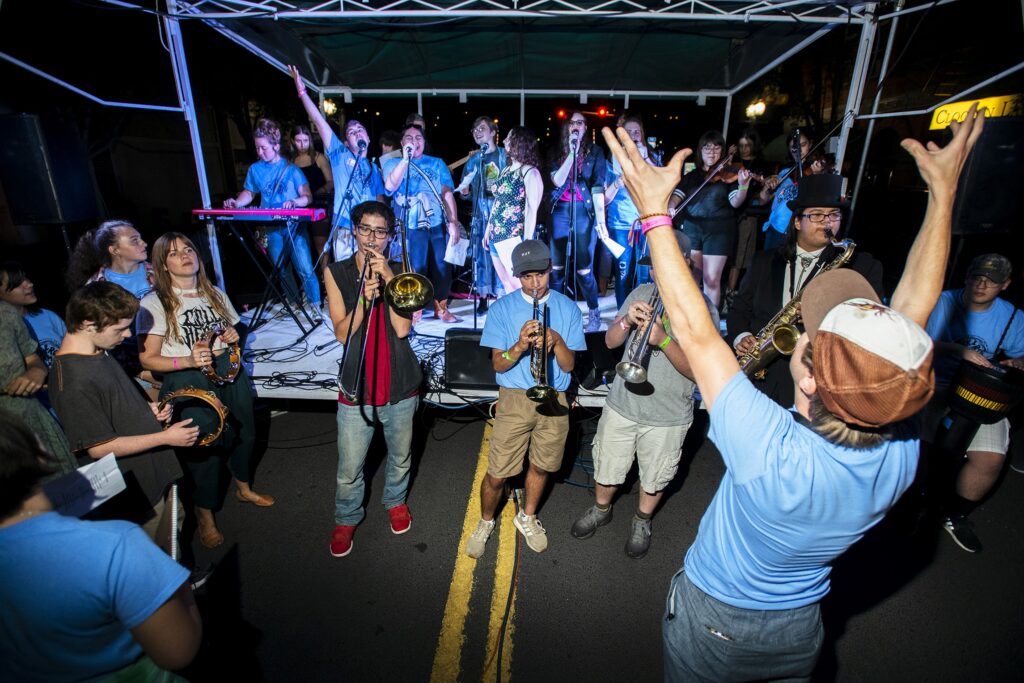
Roundhouse Foundation grantee partner Pendleton Center for the Arts
In 2021, High Desert Museum and Oregon Coast Aquarium each received seven-figure gifts.
Creative placemaking, a popular concept in the philanthrosphere these days, is central to the foundation’s work. Its flagship program, Pine Meadow Ranch Center for Arts and Agriculture, is an artist residency on a 260-acre working ranch, which also engages in agricultural and ecological projects. Roundhouse purchased and retooled the property in 2017, driven by Kathy’s vision.
“How do you do creative placemaking? Well, you have to invest in the space,” Erin says.
A longtime artist who was once selected to create the Oregon ornament for the 2008 White House Christmas tree, Kathy was part of an organization called Community Action Team. In this role, she focused on ways to use the arts to build a creative economy. Rather than looking outside her community, Kathy and her team ultimately concluded that their hometown would be the perfect place for a multi-day retreat for talented artists.
“I realized that there’s a lot of support for kids in the arts, and scholarships as you exit high school. But not so much as you emerge from an MFA program. You better be a really great waiter, too. So we decided to do something that would really re-energize these artists. Like when they were in school,” Kathy says.
Roundhouse Foundation eventually settled on a property owned by longtime Sisters rancher, aviator and planning commissioner Dorro Sokol, who, like Ma Boyle, passed away in Oregon in her 90s.
“We are bringing together people from diverse groups of thought in one space. Even if it sparks one idea or one connection. It’s worth it,” Kathy says.
The 260-acre space also aligns with the foundation’s focus on the environment, including regenerative agriculture, and watershed development and conservation. Pine Meadow Ranch even has 50 acres of forest land.
“We have this opportunity to talk about creative placemaking in connection to conservation and agriculture and support our grant partners with this space. It’s a living laboratory. The running joke is that when you want to make a million dollars in farming you start with $5 million. But when we have the capital, we can test some of these projects ourselves,” Erin says.
Embracing the full rural community
Throughout our conversation, Kathy and Erin emphasized a grantmaking approach that is about learning and embracing failure.
“Sometimes things don’t work. And that’s okay. We talk about this on the granting side too. ‘Tell us about our most epic failure,’ we might ask. For so long in philanthropy, we focused on metrics. But the reality is, especially in rural communities, sometimes you have to just try it,” Erin says.
As Roundhouse Foundation has expanded its grantmaking, Kathy says that the lack of respect for rural communities became increasingly apparent. She points to the work that the foundation does with various tribal communities in the state. Roundhouse provides funding to Lomakatsi Restoration Project’s Tribal Youth Ecological Forestry Training Program, among other efforts.
“There was so much disrespect for what these Native Americans thought about land management. But now we’re having all these catastrophic fires. It’s been a real eye opener for me,” Kathy says.
From its launch until 2019, the foundation mainly funded in the Deschutes River Basin in Central Oregon, in communities outside of cities. With the new influx of funds, Roundhouse has still kept the same four core focus areas, but expanded to focus on all of rural Oregon — including its nine federally recognized tribes.
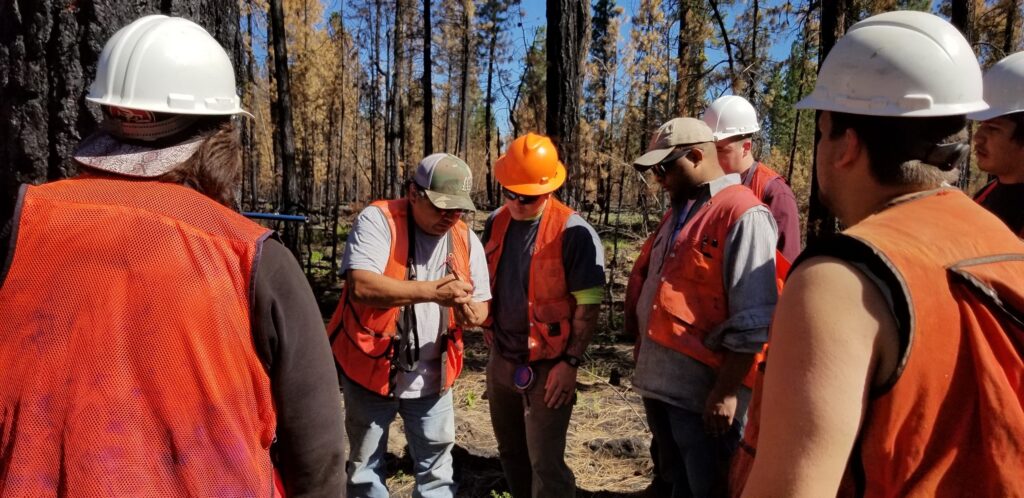
Roundhouse Foundation grantee partner, the Lomakatsi Restoration Project
This led to a deluge of calls. But it also forced Roundhouse to get out on the road and grow relationships in every corner of the state.
“We started showing up, including to one grant partner in Northeastern Oregon. They told us that we were the first funder that’s visited in three-and-a-half years. And they have a massive budget. They ended up just going to Portland every six months to make a pitch. That’s ridiculous,” Erin says.
While “trust-based philanthropy” is a buzzword these days, Erin describes part of that trust as simply showing up, meeting people in their own communities and trying to foster an authentic connection. Sometimes these conversations don’t even result in Roundhouse Foundation giving a grant. But rather, the foundation serves as a catalyst, where a vital connection allows an organization to move forward with a project without direct funds from Roundhouse.
In one case, Roundhouse made a small grant for a farm data collection project that ended up leading to an $800,000 USDA grant. “It just required sitting down and listening to needs. Rural and Native philanthropy is underfunded. This is not our story. We’re here to elevate other peoples’ stories. That was Gert’s lesson too,” Erin says.
According to the U.S. Department of Agriculture’s “Rural America at a Glance 2021” report, about 46 million people—or 14% of the total U.S. population — live in rural areas. And yet only about 7% of all grantmaking in the United States goes to rural areas.
This isn’t some kind of grand conspiracy. A lot of funders are based in urban communities, and so that is what they support. (Be sure to check out our deep dive into the lack of funding for rural communities.) However, Erin and Kathy are quick to lament “Deliverance”-type stereotypes that city dwellers sometimes have about the hinterlands. Erin says that, on some level, we need to educate funders on what rural areas actually look like.
Kathy also says funders need to learn to be more patient and less quick to judge, including in the application process.
“Sometimes you get an application and you see a misspelled word. Or sometimes even the application is handwritten on a piece of notebook paper. But then you get in your car and drive six hours. You actually meet the people running that organization,” Kathy says. “Philanthropy too often has been: wait behind the desk and hope that the electronic call you send out will result in perfect homework. No.”
Bringing people back to the community
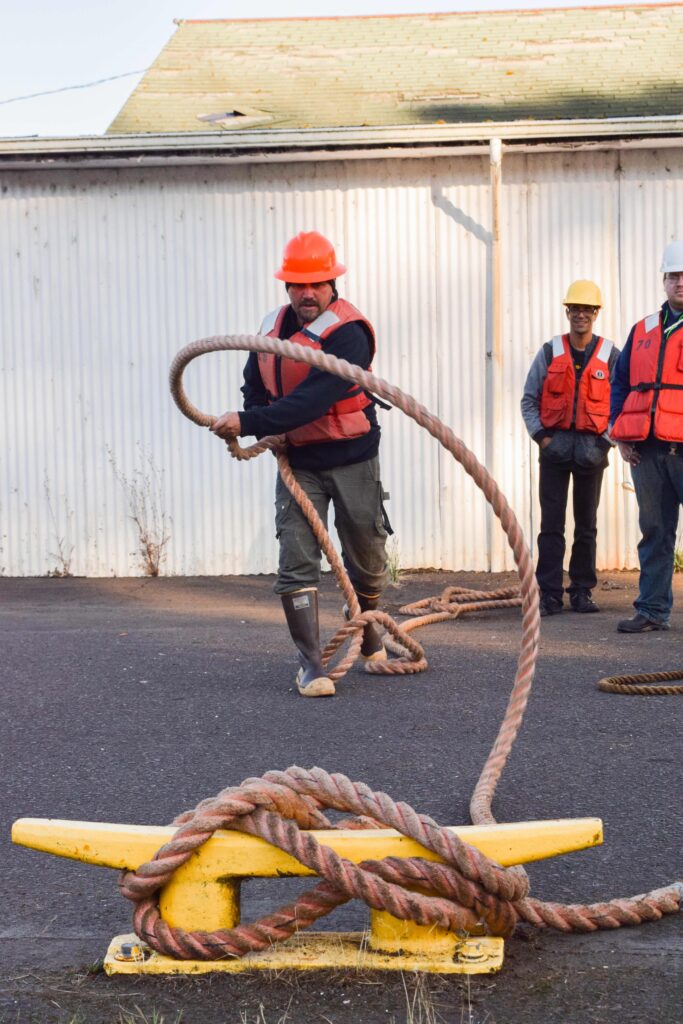
Roundhouse Foundation grantee partner, Clatsop Community College Maritime Science Program
Roundhouse Foundation’s education portfolio includes supporting programs for children who are not best served in traditional educational settings, and in career-technical areas that build skills. The foundation has made grants to a number of local community colleges, including Central Oregon Community College and Columbia Gorge Community College. Part of Roundhouse’s educational work focuses on finding pathways like community colleges for young people to share their skill sets in their communities.
“Community colleges are a great example of what represents a community. The state of Oregon has 17 community colleges. Each has very unique programming that represents its region. The program at Clatsop Community College in Astoria in the Northwestern part of the state has the only job corps site in the country that offers maritime education,” Erin says.
Through Oregon’s Promise, a statewide effort for recent Oregon high school graduates or GED completers, students are able to attend community college with free tuition. But Erin notes that, sometimes, there are barriers to entry for these programs. So Roundhouse Foundation piloted a program at Central Oregon Community College where students received stipends for these non-tuition related costs. Fire science students, for example, would get $200 for boots.
In the first year of the program, it supported 142 students. The program was so successful that Roundhouse has now expanded it to an additional five community colleges, with plans to expand to five more institutions.
Power sharing and looking ahead
Power sharing is a common refrain in equity-minded philanthropy today, and something Roundhouse Foundation also considers. But while Erin believes this framework is valuable, she doesn’t believe that the power of money will ever disappear. So the question really becomes how that power can be harnessed for good.
“My job is to elevate [a nonprofit’s] story. But I can also take that story and go to our advocates and work on an organization’s behalf. In the short term, we can provide funding. But I can also try to share that story and take the power that we have and, say, call up my congressman,” Erin explains.
There’s the power that Roundhouse is trying to share in the community and then there are the different leaders who run the foundation. The foundation has three trustees — Erin, her mother Kathy and her father Frank.
“We yell at each other and then we go have a beer,” Erin says with a laugh, adding, “But it can’t just be us making decisions.”
Roundhouse Foundation has a diverse and growing staff. The finance committee helps with impact investing. A separate committee helps run and advise Pine Meadow Ranch. And Roundhouse’s grants committee reviews all applications and provides information to the trustees. This committee is made up of 20 members that come from different lived experiences from across the state. Volunteers participating in committees earn a stipend for their efforts.
Right now, the foundation plans to continue to grow its grantmaking and expand its staff for more capacity. After $11 million in grantmaking in 2021, the foundation estimates it will distribute about $17 million this year. Erin thinks that should be roughly the ceiling for now. But what’s really important is that staff do the work of getting to know people and organizations across the state.
As for Erin, she plans to continue to use her role within the family to bring awareness to vital causes within these rural communities. “You have to find someone who can navigate the family dynamic. I can have a difficult conversation with my folks. But we are all collaborators. And Gert was the same.”
Erin has three children, two not yet teenagers and one in their early 20s. She says that she would love for them to be engaged in the philanthropic spirit of Roundhouse Foundation and to help support the communities where they live.
Over the past few years, her children have traveled with her several times for site visits and she says their fresh perspective is already adding new insight to the foundation’s work. Her youngest has a passion for animals and donates to local animal shelters. Her middle son has shown an interest in oceans and clean water. And her oldest, a college senior in Arizona, has shown an interest in supporting that community.
“I recognize that my kids are all unique individuals and have different interests that light their fire. My hope would be that they can align their interests with the work of the foundation. But if that’s not the case, that’s okay too. They’re smart young people with big hearts finding their way in the world and whatever way they show up to support their friends and neighbors will be right for them,” Erin says.
